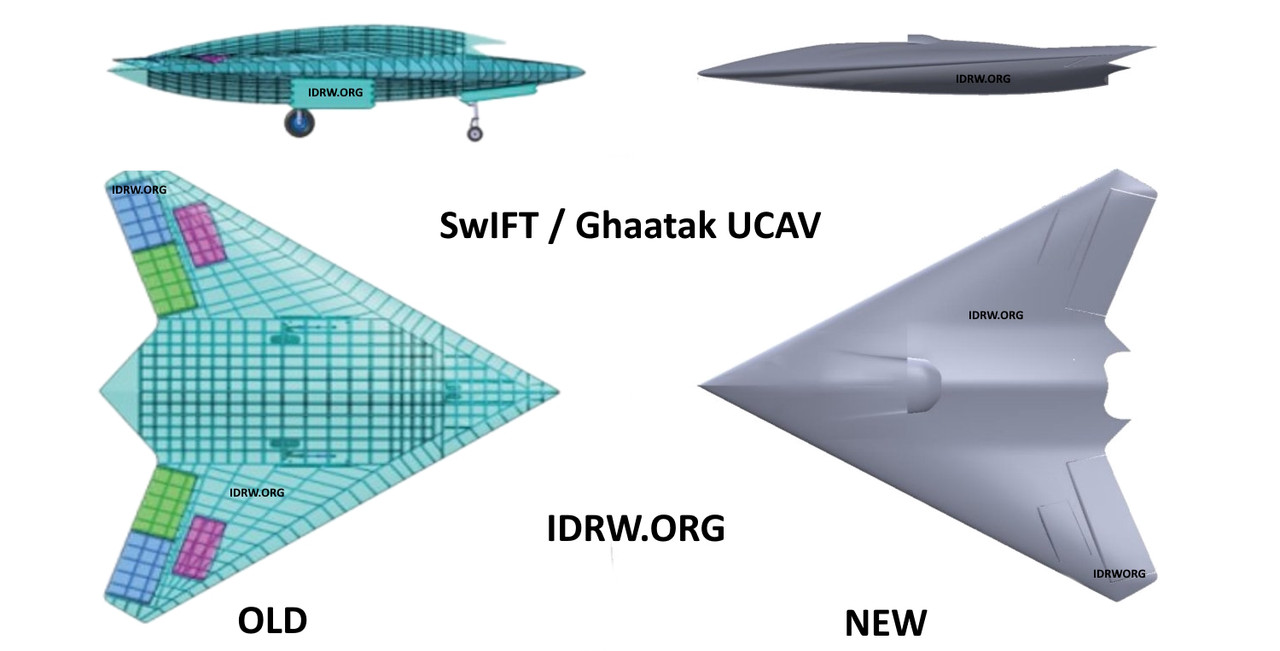SOURCE: RAUNAK KUNDE / NEWS BEAT / IDRW.ORG


The Defence Research and Development Organisation (DRDO) and the Aeronautical Development Establishment (ADE) are set to begin fabricating a full-scale model of the Ghatak stealth unmanned combat aerial vehicle (UCAV) program. This development follows the infusion of funding for the Advanced Medium Combat Aircraft (AMCA) and Ghatak programs, signifying a major milestone in India’s indigenous stealth aircraft capabilities.
The Ghatak is a 12-ton, stealthy unmanned aerial vehicle (UAV) designed to operate in high-threat environments. It is intended to perform deep penetration strikes, surveillance, and reconnaissance missions in contested airspace, where conventional manned aircraft may not survive.
One of the most significant features of the Ghatak UCAV will be its Internal Weapons Bay (IWB), allowing it to carry a 1.5-ton payload while maintaining a low radar cross-section (RCS). This makes it ideal for precision strikes behind enemy lines, targeting high-value assets while using its stealth to avoid detection by sophisticated air defence systems.
Both the AMCA (Advanced Medium Combat Aircraft) and Ghatak programs are closely linked. Initially, both programs received over ?400 crores in funding from the Indian government for their design and development phases. With the AMCA program recently receiving clearance from the Cabinet Committee on Security (CCS) and the subsequent release of ?15,000 crores, the flow of funds is set to benefit the Ghatak program as well. Part of these funds will go toward fabricating the full-scale 12-ton UCAV.
Both programs are crucial to India’s future combat aviation strategy, with the AMCA representing a fifth-generation fighter and the Ghatak UCAV providing unmanned combat capabilities. Their synergy extends beyond funding, with both programs expected to share critical technologies such as stealth, avionics, and propulsion systems.
At the heart of the Ghatak UCAV will be a 46kN Dry Kaveri engine, derived from the Kaveri engine originally developed for manned fighters. The “dry” version lacks an afterburner, making it suitable for unmanned platforms where fuel efficiency and lower infrared signature are more critical than raw speed.
This engine will not only provide the Ghatak with the required thrust-to-weight ratio for subsonic missions but will also enhance its combat endurance, making it a formidable asset for intelligence, surveillance, and reconnaissance (ISR) and attack missions deep into enemy territory.
The Ghatak UCAV is expected to feature Manned-Unmanned Teaming (MUM-T), where the UCAV can operate in tandem with manned fighters like the AMCA or Su-30MKI, taking on tasks that would otherwise expose pilots to extreme risks. In this operational mode, the UCAV can act as a wingman, scouting ahead, drawing enemy fire, or engaging targets while the manned aircraft stays at a safer distance.
The Ghatak UCAV is projected to have a range and size comparable to the LCA Tejas Mk1A but will have larger wings and a much slower cruising speed due to its stealthy nature and aerodynamic design focused on endurance rather than speed. With its payload capacity of 1.5 tons and a low observable profile, it will be suited for long-range precision strikes.
Given these parameters, the Ghatak is likely to have a combat endurance in the range of 5 to 8 hours depending on the mission profile and payload. For long-endurance ISR missions without a heavy strike payload, the endurance could be on the higher end of this estimate.
NOTE : Article cannot be reproduced without written permission of idrw.org in any form even for YouTube Videos to avoid Copy right strikes. Websites doing illegal reproductions will get DMCA and Legal Notices.